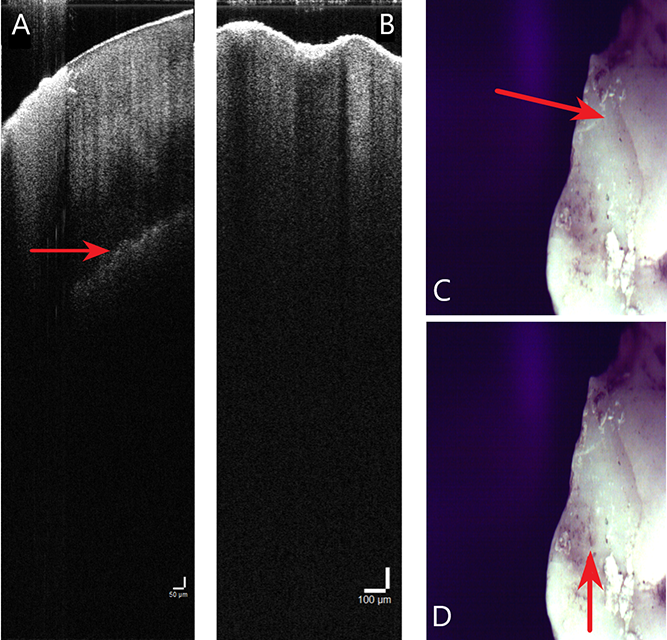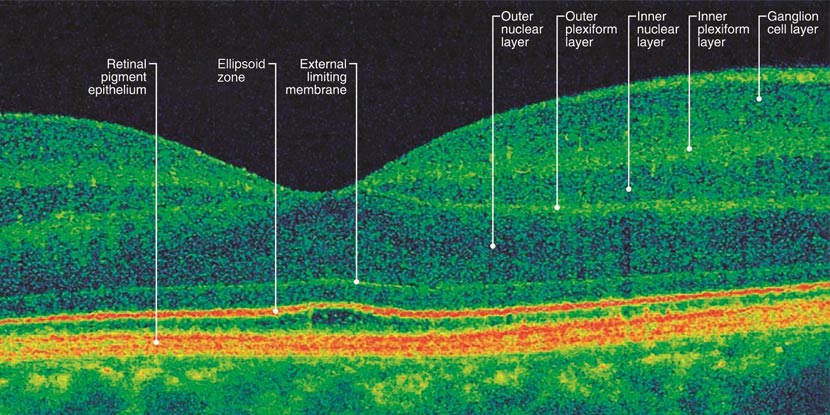Teeth are abundant in the human fossil record because enamel and dentine are both highly mineralized, facilitating the transition from tissue to fossil. For some hominin species, teeth make up most of the fossil record. To work out how those species are related, we rely on external and internal dental anatomy to sort fossils into taxa. One especially useful feature is the shape of the boundary between the enamel and the dentine (aka the enamel dentine junction, or EDJ). Usually micro-CT scans are used to image the internal structure of fossil teeth, but in some cases there is not enough difference in the signal between the enamel and the dentine to see the EDJ in fossil specimens.

Optical Coherence Tomography (OCT) on pig teeth
One of the researchers in GW’s School of Engineering suggested we try Optical Coherence Tomography (OCT), which uses infrared light instead of X-rays, to see if it could penetrate deep enough into teeth to image the EDJ. To test if OCT was worth using on fossil hominin teeth, we decided to try it on pig teeth. The premolars of pigs are the small teeth in front of the larger molars that can easily be confused with hominin teeth to the inexpert eye. Not many people have access to pig premolars, but by chance two colleagues in CASHP had access to a modest collection of pig premolars, so we were off and running. Or so we thought.
Images A and B in the figure show OCT scans of a juvenile pig premolar made at the points indicated in images C and D, respectively. You can see the EDJ in image A¾the white streak indicated by the large red arrow. But the resolution of the EDJ is poor, and you can’t see it at all in image B. It seems that the infrared light used in OCT does not penetrate enamel that is more than ~1.00 mm thick. The average penetrance of pig enamel using OCT was ~0.5 mm, which is much less than the average thickness of modern human enamel, let alone the average thickness of the enamel covering the teeth of archaic hominin species. Unfortunately, Optical Coherence Tomography is not a suitable alternative method for visualizing the EDJ of fossil hominin teeth.
Negative results are frustrating and disappointing, and many scientists refrain from publishing them. But this means that others will waste their time exploring whether OCT could work on teeth where micro-CT does not. Attempting to stop the cycle here, I hope this blog will save another 1st year PhD student from the same outcome; instead, encouraging others interested in this problem to look into other solutions.
Acknowledgments:
Thanks to Dr. Jason Zara for providing access to the OCT machine, and for his help conducting the analyses, Alexander Průcha and Dr. Paul Sandberg for providing the pig teeth, and Dr. Bernard Wood for encouraged me to try this new method.


